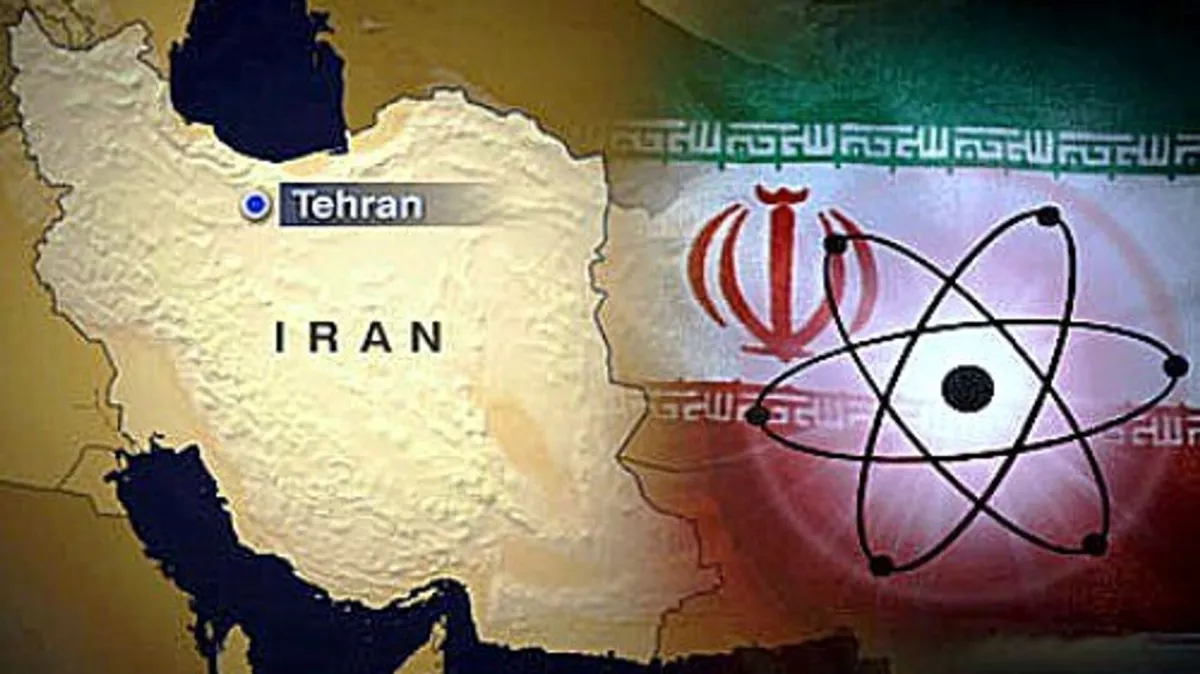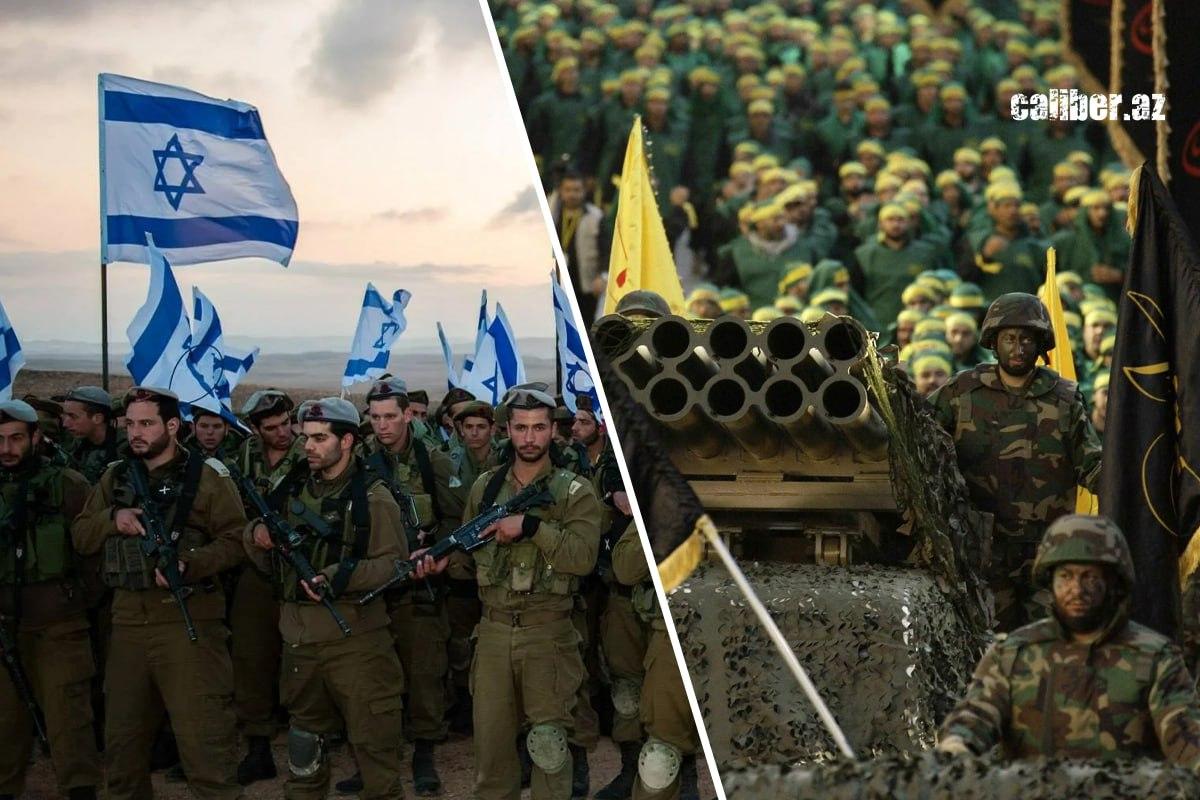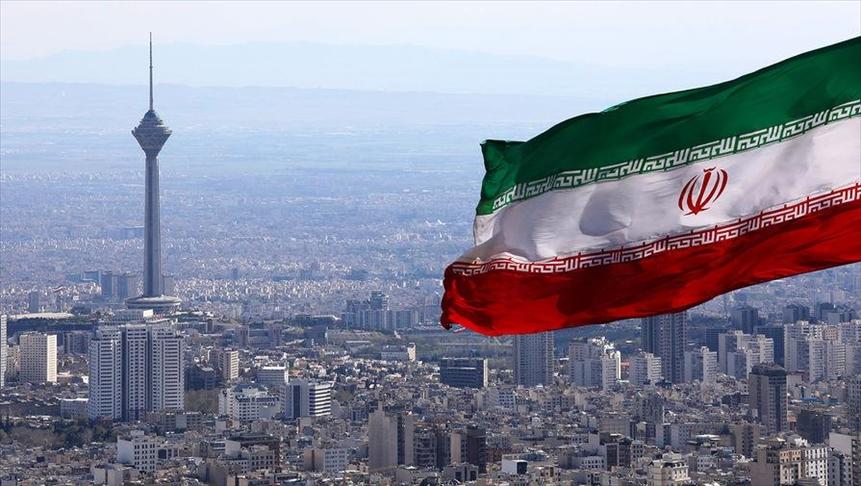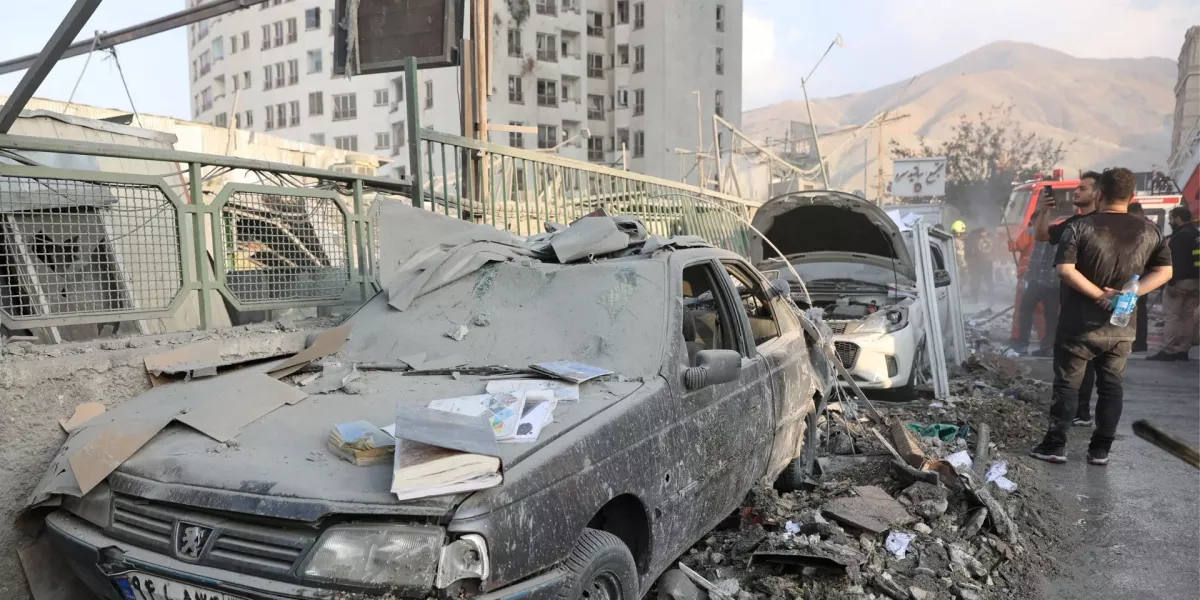Israel vs Iran: War in full swing Decapitation strikes
The Israeli strike was devastating—far stronger than the previous one—and this is only the beginning. Back on October 26, 2024, Israeli aircraft launched just over a hundred precision missiles at Iranian territory, effectively dismantling air defences around Tehran and Isfahan, leaving those cities open to follow-up strikes. The Iranian military never managed to patch the holes in their defences.
The latest strike, carried out during the night of June 13, involved 200 combat aircraft that reportedly dropped 300 precision-guided munitions. The relatively small number should come as no surprise—these were expensive, high-precision weapons, including glide bombs and cruise missiles. The goal of the operation was to destroy Iran’s nuclear and missile programmes. Numerous related sites were targeted. Once again, Israel has made it clear: it will not allow Iran to obtain nuclear weapons. Tehran had approached the red line, and that is what triggered the attack.
However, there was another objective as well — the elimination of Iran’s top military and political leadership. It appears that if not the entire, then nearly the entire senior military command was wiped out. As a result of the strikes, Major General Hossein Salami, Commander of the Islamic Revolutionary Guard Corps (IRGC), and Major General Mohammad Bagheri, Chief of the General Staff of Iran’s Armed Forces, were killed. Also among the dead are General Gholam Ali Rashid, Deputy Commander of Iran’s Armed Forces, along with several other high-ranking officers. The death of Amir Ali Hajizadeh, head of the IRGC’s Aerospace Force, has also been confirmed.
Iranian sources have informed the public that “Mehdi Rabbani, Deputy Commander of the IRGC’s Operations Headquarters, was killed along with his wife and children.” According to Reuters, more than 20 senior Iranian military officials were eliminated by Israel overnight. Between six and ten nuclear scientists were also reportedly killed.

It is important to clarify here that Iran has two distinct military forces. The first is the regular army, numbering around 400,000 troops. The second is the Islamic Revolutionary Guard Corps (IRGC), with about 100,000 personnel — made up of soldiers and officers selected for their strong religious commitment. However, the IRGC is more than just a military force; it is the core of Iran’s politico-economic system.
The IRGC and affiliated private entities control between one-third and one-half of the country’s economy, encompassing the defence and nuclear industries, telecommunications, irrigation systems, and hundreds of companies across various sectors. The IRGC also oversees Iran’s foreign operations — from backing proxies such as Lebanon’s Hezbollah, the Houthis in Yemen, and militias in Iraq, to managing oil exports and broader trade operations.
Additionally, the IRGC controls a vast intelligence apparatus and the Basij militia, which is tasked with suppressing domestic dissent. In essence, what we are witnessing is the decapitation of a significant portion of Iran’s ruling elite. Above them all stands only the Supreme Leader, Ayatollah Ali Khamenei, to whom all Iranian security forces, including the IRGC, are directly subordinate, along with his powerful administrative office.
Israel conducted strikes not only from outside Iran, but also from within the country, using drones and missile systems. According to Iranian media sources, Mossad carried out three covert operations in the heart of Iran:
-
In central Iran, Mossad commando units deployed precision-guided weapon systems in open areas near Iranian surface-to-air missile (SAM) sites. During the Israeli air assault, these systems were activated in coordination with the Israeli Air Force strikes across the country, launching precision missiles at designated targets.
-
To neutralise the remaining Iranian air defences that posed a threat to Israeli fighter jets, Mossad secretly installed advanced strike systems on mobile platforms. At the onset of the surprise attack, these weapons were activated, completely destroying key Iranian defensive installations.
-
In the third operation, Mossad established a network of explosive drones that had been pre-positioned deep inside Iran. During the Israeli offensive, these drones were activated and targeted surface-to-surface missile launchers at the Asfaqabad base near Tehran, which posed a strategic threat to Israel.
The exceptional precision of Israel’s strikes is not only the result of advanced weaponry, but also of intelligence gathered from deep within Iran. The fact that Israeli intelligence has access to such sensitive data became clear as early as 2024, when Hamas political leader Ismail Haniyeh was assassinated in a heavily guarded elite compound in Tehran. This also points to a possible deep rift within the Iranian regime, with some factions allegedly leaking information about their rivals to Mossad.
Iran responded by launching hundreds of drones toward Israeli territory, but all were intercepted by the IDF and its allies, including the U.S. and British air forces. As in previous rounds of conflict, Iran’s retaliatory strikes proved ineffective.
As for the United States, Secretary of State Marco Rubio stated that the U.S. had no involvement in the attack and bore no responsibility for it. However, Washington warned Iran against any attempt to target American assets in the Middle East, declaring that such actions would trigger a U.S. response.

However, it is no secret that the United States has assembled a powerful air and naval armada in the region, controlling the airspace over the Middle East. Without their coordination and approval, Israel simply could not have carried out such strikes.
Why did the U.S. give the green light to Israel?
Previously, then-President Donald Trump had restrained Israeli Prime Minister Benjamin Netanyahu from striking Iran. Trump hoped that negotiations over the nuclear deal with Iran would bear fruit. However, these talks reached an impasse. Washington demanded that Iran stop enriching uranium to weapons-grade levels, allow inspections of nuclear facilities, and dismantle all uranium enrichment infrastructure. In return, crippling American sanctions on Iran’s economy would be lifted.
Tehran agreed to everything except dismantling the enrichment infrastructure, calling this its “red line.” In response to Iran’s red line, the U.S. administration gave Netanyahu the green light to bomb Iran.

Trump’s stance this time looks pretty strong. He didn’t bomb Iran himself; in fact, he restrained Netanyahu from such strikes and pushed Iran towards a deal. Iran refuses to dismantle its uranium enrichment facilities — their “red line.” Fine, Trump says, I’ll stand aside and watch Israel handle you. But if you attack American bases, I’ll join Israel in those bombings, and you won’t like the consequences. In short: either you stop resisting and accept the nuclear deal on the terms I offered, or Israel will keep bombing you until your country falls apart. The choice is yours.
Hezbollah: Iran’s trump card—is it now beaten?
Previously, Iran’s main trump card to theoretically prevent Israeli strikes on its nuclear program was the Lebanese party Hezbollah, one of Tehran’s key allies. Thanks to Iranian support, Hezbollah grew into one of the most powerful armies in the Middle East, with 150,000 rockets aimed at Israel and thousands of modern drones.
In the event of an attack on Iran, Hezbollah was expected to unleash rocket barrages on Israeli territory, paralysing its economy for months and causing collapse. And if Israel launched a ground invasion into Lebanon, Hezbollah’s guerrilla forces, highly trained for partisan warfare, would be waiting.
Today, however, Hezbollah has been significantly weakened by the 2024 war with Israel. While its guerrilla units managed to slow the advance of Israeli ground forces through ambushes, its top leadership was completely wiped out, thousands of fighters were killed or maimed during the so-called “pager attack” and other operations, and a large portion of its weapons depots were destroyed by Israeli Air Force strikes.

Furthermore, Hezbollah previously received aid from Iran and Iraq through Syria, thanks to the friendly regime of Bashar al-Assad. But that regime was dismantled by armed Syrian opposition forces in November–December of last year, cutting off Hezbollah’s main logistical artery. It’s uncertain whether Hezbollah today is capable of fulfilling its mission—to protect Iran. This circumstance has effectively freed Israel’s hands.
As noted earlier, the Iranian strikes on Israel—carried out by rockets and drones launched from Iranian territory—have so far proven largely ineffective.
What are the objectives of the attack?
If Israel was able to eliminate the leadership of the Iranian military, why did it not target Iran’s supreme leader, Ali Khamenei?
Most likely, Trump—who wants to finalise a nuclear deal with Tehran—requested that he not be killed, reasoning that otherwise there would be no one left to negotiate with. The assassination of Khamenei could plunge Iran into chaos.
Israel has several military and political objectives. You could say there is a minimum program and a maximum program.
The basic stated objective was the destruction of Iran’s nuclear program and its missile weapons program. This operation could take several days or up to a week, as Iran’s nuclear facilities are dispersed throughout the country, as is its missile production—considered by Israel a significant threat, especially since missiles could serve as delivery systems for nuclear warheads. The attacks on Iran amount to a full-scale air war involving all branches of the Israeli Air Force—approximately 250 combat aircraft.
The maximum program involves regime change, which Netanyahu has hinted at repeatedly in the past. Iran is Israel’s main adversary in the Middle East, though it was once an ally. Theoretically, regime change could be achieved by eliminating the top military and political leadership of Iran—including the supreme leader—and by paralysing the Iranian security forces through the destruction of their command centres.

One or two waves of airstrikes will not lead to such an outcome. However, prolonged bombings, especially if the Supreme Leader and many other top regime figures are eliminated, could indeed throw Iran’s military-political system into chaos.
A Libyan scenario?
It is possible that critics of the current authorities might take advantage of Israeli strikes to organise uprisings. This is plausible given the widespread hatred toward the regime across various social groups — from the working class to ethnic minorities and urban youth. According to various estimates, 60–70 per cent of Iranians support regime change in a country where two-thirds of the population live at or below the poverty line, and inflation exceeds 40 per cent per year. Every few years, mass protests erupt, such as the “Mahsa Amini uprising” in 2022–2023.
Just days ago, a powerful strike by truck drivers, angry about working conditions and rising poverty, took place in Iran, spreading to 130 cities. Its participants acted illegally, attacking truck drivers who refused to join them. These class protests are often organised by secret groups and workers’ assemblies rather than peaceful union leaders, which gives them a strong radical character.
All attempts by the regime to rally the population around the flag by pointing to foreign threats have so far proven futile. Moreover, half — or even the majority — of Iranians belong to ethnic groups angered by the fact that their regions are the poorest, and that their resources are siphoned off to the capital and Persian-speaking provinces. Protests by Azerbaijanis, Kurds, Arabs, and Baluchis have become increasingly common.
If regular airstrikes begin to destabilise the regime, they could spark an uprising from within. In that case, the Libyan scenario might unfold. In 2011, the mass uprising against Muammar Gaddafi’s regime in Libya was accompanied by NATO air support, which targeted loyalist forces and security services. A similar event took place in Iraq in 1991, when Saddam Hussein’s army, weakened by defeat and losses in the war with the United States, faced internal rebellion: deserters and virtually the entire population of provincial towns — from Basra in the south to Sulaymaniyah in the north — rose up against him.
There is another possible way to break the regime. As the “Voice of Israel” channel noted: “Now that Iran’s skies are completely open and defenceless, its leaders must make a choice. If they attack us, we will strike their oil refineries and destroy their economy. If they allow us to destroy their nuclear facilities without a harsh response, we will leave their oil refineries untouched.”
Previously, IDF commanders had pointed to the possibility of targeting two key civilian infrastructure sites in Iran: the port of Bandar Abbas — through which 40–50 percent of import-export operations pass — and the oil terminals on Kharg Island, the main hub for Iranian oil exports. Strikes on these targets could paralyse the economy and trigger an uprising.

Finally, Israel might choose to apply all these measures simultaneously — systematically dismantling both the economy and the regime’s military-political infrastructure by targeting critical economic facilities, infrastructure, decision-making centres, and command posts of the security forces.
Trump may be the one to halt these catastrophic scenarios. He has no desire for chaos in Iran. While Israel would like to see regime change in Tehran, Trump’s goal is more modest: to pressure Khamenei using Israel’s actions as leverage. The U.S. president’s primary objective is to secure favourable terms for a new nuclear deal with Iran. If he achieves that — if Iran ultimately agrees to abandon uranium enrichment systems — Trump will leave Tehran alone, forbid further Israeli airstrikes, and may even lift economic sanctions. But if Iran refuses to compromise, the Israeli Air Force will continue its campaign of destruction.
A new reality
Publicist, oil analyst, and Iran expert Mikhail Krutikhin wrote the following: “Israel’s Operation ‘Am KeLavi’ (‘The People Are Like a Lion’) is not a one-off strike. Following the initial destruction of command centres, nuclear facilities, missile systems, and other military targets, Iran has become a zone where any attempt to restore military capabilities will be eliminated. If a suspicious site appears, it will be hit. So, any calls to retaliate against the Israelis are purely emotional and ultimately hopeless. Iran is now defenceless and fully exposed to the pre-emptive destruction of military targets. This is the new reality the Iranians will have to live with — until the fall of the Khomeinist-jihadist regime.”
Is he right in his assessment? The deadly Israeli strikes have met with virtually no response. The Iranian regime has shown weakness. At this point, it resembles little more than Zulu warriors charging British machine guns with bows and arrows. Israel is displaying overwhelming military and technological superiority — and weak regimes do not last long, especially in the Middle East.
The Iranian state, led by 86-year-old Khamenei, has proven defenceless despite its loud rhetoric. The truth is, its weakness only emboldens its adversaries to escalate their attacks. If this trend continues, there’s no guarantee that the United States will even seek dialogue. Alongside the Israelis, Washington might instead opt to back regime change.
That said, this remains just one of several possible scenarios for the future — and not the official agenda at present.
However, if it becomes clear that Tehran has no real means of retaliation, such a scenario may become highly probable.








